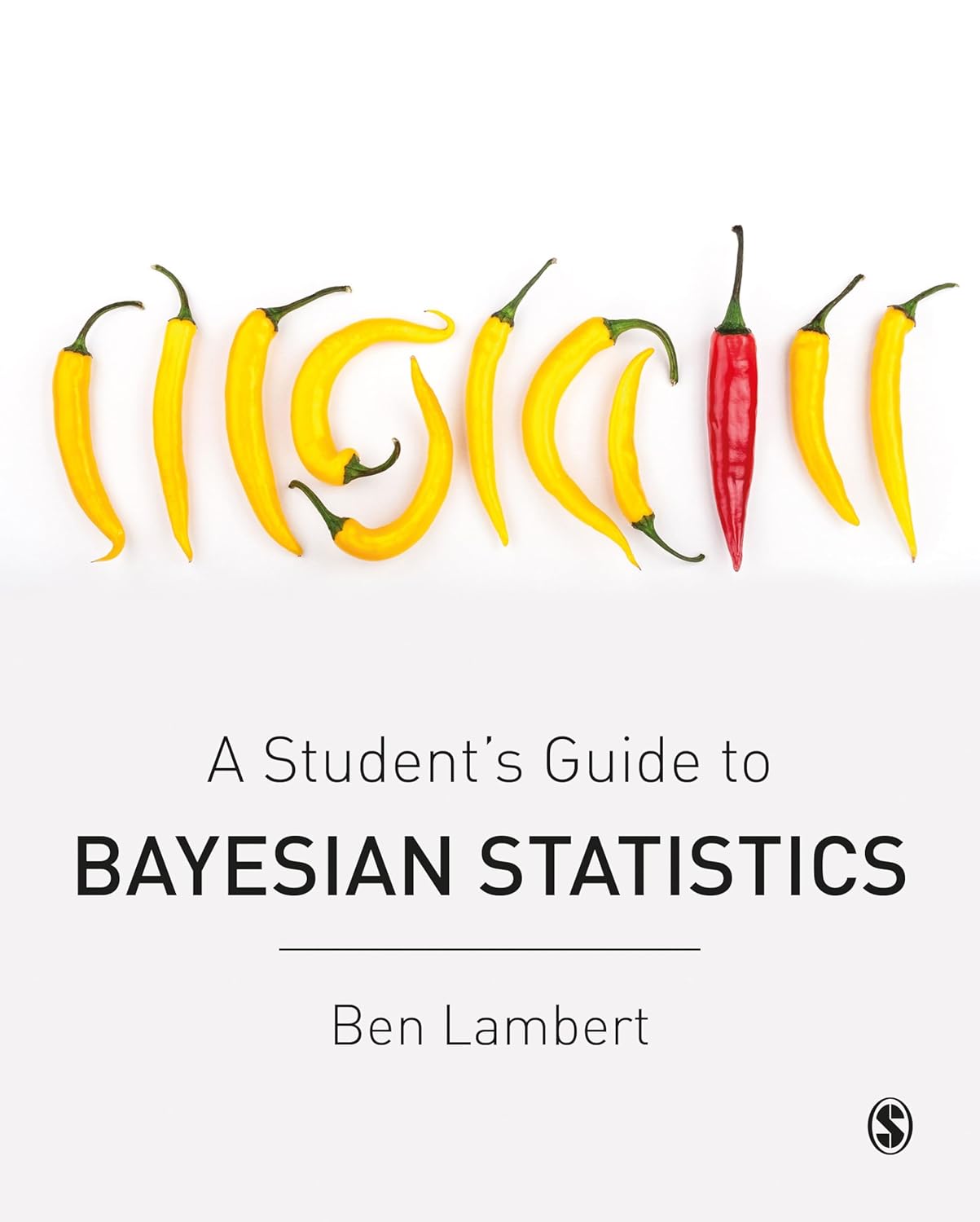 A question on X validated led me to this Bayesian book with a chill cover (except that it first made me seek a word from the chili sequence!), because of a graph within that confused the OP for that question. Here is the graph:
A question on X validated led me to this Bayesian book with a chill cover (except that it first made me seek a word from the chili sequence!), because of a graph within that confused the OP for that question. Here is the graph:
 It represents three *prior* densities at once, namely the (uniform) prior density of a Binomial probability θ, the prior density of its transform θ², and the prior density of the other transform θ¹⁰. Which makes no sense since the first axis is indexed simultaneously by values of the three random variables. Meaning a particular index like 0.4 corresponds to three values of θ, namely θ=0.4 and θ²=0.4 and θ¹⁰=0.4… In other words, the “probability of event occurring, f(θ), corresponds to *three different* events and *three different* f’s. Another needless confusion is that the red and dashed density curves appeared as everywhere above one another, which is impossible since they both are probability densities. And the boxed legend does not help
It represents three *prior* densities at once, namely the (uniform) prior density of a Binomial probability θ, the prior density of its transform θ², and the prior density of the other transform θ¹⁰. Which makes no sense since the first axis is indexed simultaneously by values of the three random variables. Meaning a particular index like 0.4 corresponds to three values of θ, namely θ=0.4 and θ²=0.4 and θ¹⁰=0.4… In other words, the “probability of event occurring, f(θ), corresponds to *three different* events and *three different* f’s. Another needless confusion is that the red and dashed density curves appeared as everywhere above one another, which is impossible since they both are probability densities. And the boxed legend does not help
![My friend E.J., along with Dora Matzke,from the University of Amsterdam, are writing a [not-for-babies] Bayesian book from their Master course 'Bayesian Inference for Psychological Science'. Chapters are put on-line as soon as they become available. Most enjoyable prose, with, obviously, many historical references. The latest being about Buffon.](https://www.bayesianspectacles.org/wp-content/uploads/2023/08/Cover.jpg)



